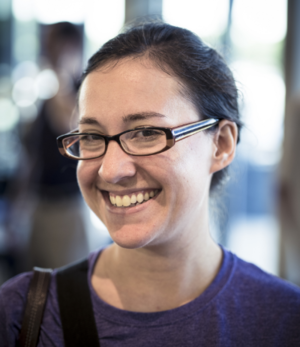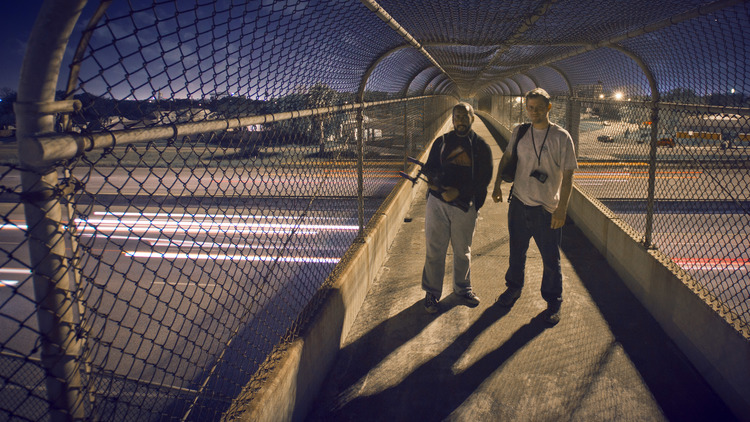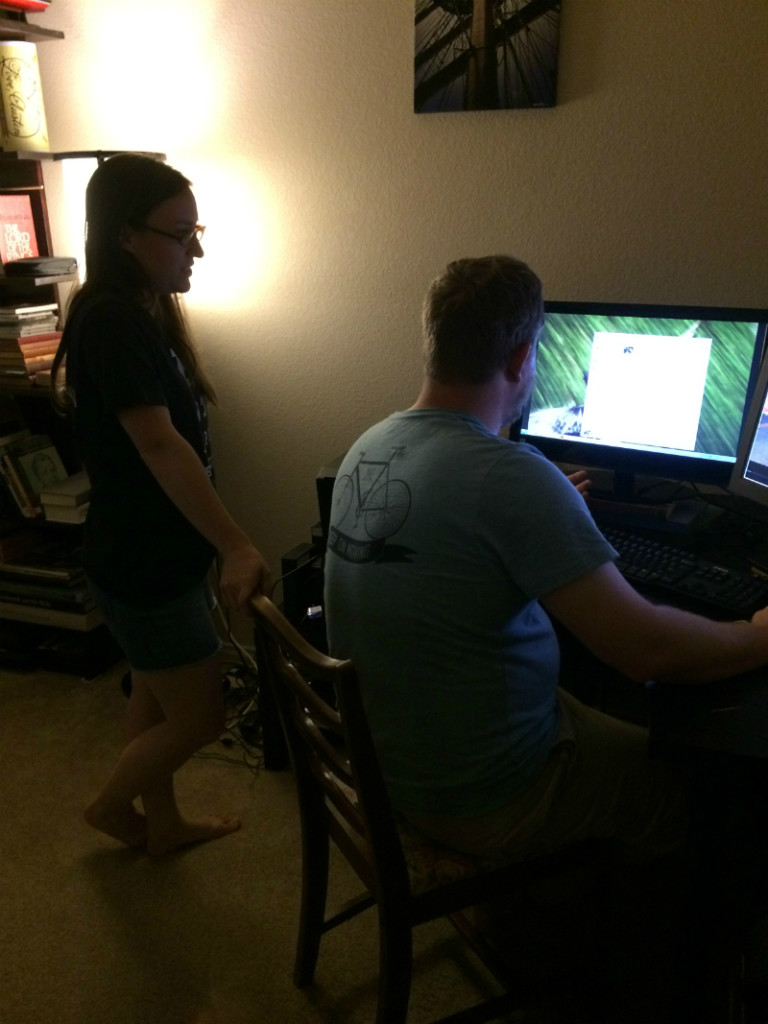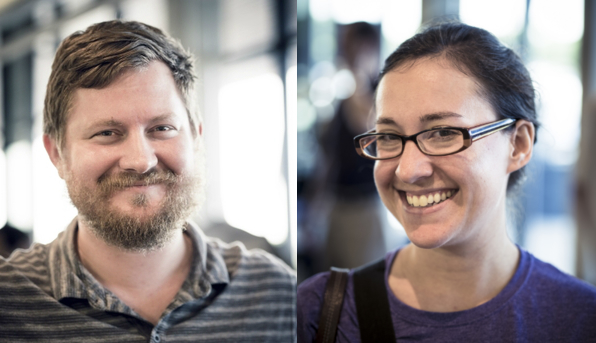Film: A habit of seeing opportunity
By Karen Le Blanc
Assistant Editor

“Puppies are hard to film. They move.”
In 2012, Stephen Henderson learned that Purina PetCare Company needed puppy footage. “[Demand Media] sent out this email: ‘Looking for puppy videos. They have to be this long to this long. Can’t show people,'” Stephen remembered. “All these criteria. ‘If we like them we’ll pay $100’—but only if they like them. So we did a couple.”
The Habit of Seeing

With his wife Whitney, Stephen owns The Habit of Seeing, a cinematic visual storytelling service in Austin, Texas. “I moved to Austin [in 2010] and got started doing video,” Stephen said. But his journey to full-time filmmaking was anything but direct.
Stephen entered Texas A&M University in 2003, planning a career in computer graphics. At the same time he started his first business, buying and selling books. “I started looking at a couple of books that I thought might be valuable art books, and I would write down the ISBN number and go home and look them up online,” he said. “We’d go to Half Price Books—that’s where I’d buy most of my books actually, like the clearance section—and I would start finding books that were worth a lot more online. So then I would go back and buy them. Then I started looking them up on my phone and buying a lot more, and then I started just going all over Texas buying books.”
But, while studying at A&M and beginning his life as an entrepreneur, Stephen was also realizing that he would much rather be a filmmaker than a computer graphics programmer. So he left college and decided to teach himself filmmaking, using his entrepreneurial skills to support himself while he learned.
“Since about 2006 I just did the book business, [and] lived in College Station, [Texas]. But rather than going right into filmmaking—I knew that’s where I wanted to be—I thought I would just learn that through learning visual art and also reading literature and theology,” Stephen said. “Film is a visual medium, but also drawing helps in any art form because it helps you see. And that’s what I ended up naming my business . . . The Habit of Seeing,” Stephen said.
Stephen purchased his first camera in 2010. For the first few years, his primary support continued to be from book sales. Video work was somewhat inconsistent—like the Purina puppy job.
“[I was] shooting all kinds of things. Doing a lot of free work for people. Volunteering. Just kind of building up my portfolio,” Stephen said. Stephen grew up in Rockport, Texas, one of seven children across the street from a family with ten kids. One of those neighbor children, Ellen Brett, ended up living in Austin with two daughters of her own, and one of them got lice at school. “She had to figure out how to get rid of it, which was a difficult process. And she ended up starting a business doing lice removal, ’cause she knew how to do it. And so I made her a video for her business. It was called Primitive Grooming. That was one of the first videos I did when I moved here. I interviewed her daughter. It was kind of a fun, playful video,” Stephen said. That video gig let to another, which led to another, and then another.
The next video was for Austin Tinkering School, founded by one of Brett’s friends and neighbors in east Austin who saw the Primitive Grooming video. One key difference to note—this job came with a paycheck, Stephen’s first as video producer. “It’s this school where . . . it’s kind of school but also a summer camp/after school program where kids come in her backyard and she has all these power tools and she shows them how to use the power tools and they make stuff. But it’s an interesting philosophy. This kind of return to using your hands and learning how to do things for yourself. So she hired me to do a video for her school and that was the first paid job I had in Austin. So that was really cool. It was a really cool connection. . . . Through that video basically I can trace all my other jobs I’ve gotten,” Stephen explained. Through the Austin Tinkering School video, Stephen landed a gig for another alternative education school called Clearview Sudbury School.

Stephen frequently collaborates with Essam Osman. Their filmmaking adventures capture Stephen’s passion for art and his adventurous approach to entrepreneurship. Their friendship began at the Austin Film Meet. “When I met him I had just rented this piece of equipment, a Steadicam, and I had to return it the next day and I hadn’t got to use it. So I asked him, it was 11 o’clock at night, but I texted him and was like, ‘Hey do you want to go with me and like play with this piece of equipment before I have to return it?'” Stephen said. “We ended up staying up all night chasing each other with the Steadicam and taking turns filming each other.”
In 2012, Stephen and Osman were offered a last-minute opportunity to film the tornado destruction in Henryville, Indiana. “We ended up getting to film that out of a helicopter,” Stephen said. “They chartered a helicopter for us. So cool. We drove straight there, like, impromptu. They were like, we need somebody to go today. We just got in the car and are like, ‘Ok, let’s do it!’ We just drove straight there through the night. It was 24, maybe 20 [hours],” Stephen said.
The Hendersons’ big break – @Alain de Botton
After several foundational years, one of their biggest breaks came right when Stephen and Whitney adopted their dog Penny in August of 2014. Stephen affectionately calls her a marker in their story. “We were on our way home from Dallas, and we needed to find somewhere to let the dog out of the car to go to the bathroom. So we found this Dollar General in Belton, it was this parking lot with this field next to it,” Stephen said. Whitney walked Penny and Stephen wandered into the Dollar General. He decided to check his email since he was on a break from driving. “That’s when I got this email from Alain de Botton and I was like, ‘I can’t believe it! Is this really him? Is this the author? It was crazy. What do you say?'”
Alain de Botton is a Swiss-born, London-based writer, philosopher and television producer. He’s written several bestsellers, including The Architecture of Happiness in 2006, which happened to inspire Stephen to make a video.
“Three years ago I was listening to this book and I made this video,” Stephen said “I was like, I love this. This guy was describing the life of a house, and how the house would see changes, the people, environment, like a house as a person almost. And I was inspired.” In August 2014, local (Austin, Texas) author Austin Kleon tweeted out a picture of some library books asking which he should read next.
“He posted pictures of all these different books, and was like, ‘Which one should I read next?’ And one of them was The Architecture of Happiness. And so I tweeted at him, and I was like, ‘Read The Architecture of Happiness. It’s really good. It inspired me to make this video a couple years ago.’ And I guess I tagged him [de Botton]. You know how you can tag people? This guy has like half a million followers or something! So I recommended this book. I said, ‘Read @alaindebotton’s The Architecture of Happiness. It inspired me,'” Stephen said.
He attached the video to the tweet. “I didn’t think anything of it. Apparently he . . . saw this video and he emailed me,” Stephen said. De Botton had checked out Stephen’s website, and he wanted Stephen to work for him. The timing tweet had been perfect—de Botton was preparing to launch a YouTube channel, The School of Life, to feature video versions of his essays, very similar to what Stephen had already done with his book. “I guess it just turns out he must have just happened to have been starting this video project around the time I tweeted that,” Stephen said. “Otherwise, he has 500,000 followers, so it’s unlikely most people with that many followers would never see anything. You know, there’s so much noise.”
Whitney and Stephen have been producing videos for de Botton for the last year, covering anything from how to handle crushes to the wisdom of cows and space. “He’s really liked most of the videos we’ve made for him,” Stephen said.
A winding path
But in 2012, there was no way of knowing that Alain de Botton was in The Habit of Seeing’s future. There was just the possibility that they might get $100 for some puppies.
“We finally heard back, and [Purina and Demand had] chosen the ones we did, and then like a month later they called me and were like, ‘Hey, we really liked your puppy videos. Can you do a bunch more?’ I was like, ‘Sure.’ Then they had this quota. They had to have a certain amount of puppies each month. So they would call me and be like, ‘We need 20 more puppies this month.’ Our friend invited us on a trip to Seattle. . . . So I called them and was like, ‘Can I do puppies in Seattle and Portland?’ and they’re like, ‘Sure.’ So we went and I was able to . . . we’d be like out hanging out on the boardwalk and I’d see a puppy and I’d go film it and then come back. Or we went to a park and filmed a bunch of puppies.” Stephen filmed puppies for a year. His takeaway? “Puppies are hard to film! They move.”
As video jobs had become more steady, Stephen was able to move away from the book business, but it remained an easily accessible backup plan when necessary as the video business grew. As Stephen and Whitney’s wedding day approached and the puppy job ended, Stephen wasn’t sure what was next. “That [filming puppies] was a pretty big job. So it was over and I was getting married. Being an entrepreneur you always have fast and slow times.” I could see the shift in his demeanor for just a moment, a slight hint perhaps of the anxiety that accompanied the uncertainty in those weeks. He continued. “The day before we got married I got this call from this guy who had been at an alternative school that I’d made a video for. He also is a researcher at UT. He works in the School of Social Work. He had this project. He liked the work I did for him at the school which had been like a year ago maybe. [This] ended up being a really big job, like the biggest job I’d had so far. It was huge—almost like a short documentary, a 20 minute documentary about people who move from nursing homes back into the community. It’s people who needed to go to the nursing home for a reason but they no longer needed to be there. Normally there’s not really a route out of a nursing home, you know. For a lot of people that’s kind of the end I guess. But there are actually a lot of people who go there but get better,” Stephen said.
“They weren’t like, really old people,” Whitney clarified. “Some were young. They had like an addiction. Some had schizophrenia. Some had illnesses but they were getting better.” Stephen added, “It was really God’s provision. It was really cool and ended up being a really neat thing to work on. It was kind of a documentary, and that’s something we want to do now is do documentaries together and do some of our own projects. So that was really neat. It’s kind of cool that I can trace it all back to that first video I did, the lice removal.”
Most recently Stephen and Whitney have finally been able to do some of their own projects just as they’d hoped. I wrapped up my time with the creative couple watching them work in their home studio and learning about B-roll and color grading, one of Stephen’s favorite parts of the job. They’ve stayed stayed busy for the last year with projects for companies like How Do You Roll? sushi and RideScout that they’ve picked up through online sites and Facebook groups like Austin Freelance Gigs as well as with their latest de Botton project, “A Working Day” videos for The School of Life channel, the first of which was released in January and featured a neurosurgeon. These videos are a bit different in that they don’t begin with a script or essay. “I liked that one because it was more . . . journalism. . . . More documentary, which involves discovery,” Stephen said.

Whitney is more involved on the business side of things with organization, accounting and producing duties, but is now learning to edit as well. It takes three to five times as long to edit as it does to film, so this has helped with their turnaround timeframes. “Yeah, it’s been great. So . . . Whitney’s been editing too. And she’s a good editor. Editing is all about two things: Organizing, and throwing things away. And those two things are not things I naturally do,” Stephen admitted. “It’s the thing I have to do the most of, and it’s also the hardest thing for me.” They might film eight hours to make a two minute video. “Yeah so it’s like, ‘What’s the best half a percent of the video I’ve shot?'” Stephen said. “I can say, ‘Whitney, What do you think? What do we need to throw away here?’ And she’s like ‘Throw that away.’ And while I always move parts of video, just move it to the side, she’s like, ‘No. throw it away.'” While Stephen searches for some footage to show me, Whitney points out a pile of files. “This is all Stephen’s ‘Maybes,'” she chuckles. “You know. Trash, right?”
Editor’s note: This post has been updated since it was originally published.
